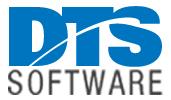DTS Clone Center (DCC)
DTS Clone Center (DCC) is a feature-rich tape migration and device management utility that makes converting to new tape technologies simple and straightforward. DCC works with all types of tape technologies, including the IBM TS7700 series, the Dell/EMC DLm, the Optica zVT, and others. And DCC can now migrate tapes at the volume level, retaining the original volume serial number, making migration much faster and minimizing tape metadata updates. Volume cloning is flexible and multitasked, allowing large scale migration to take place concurrently with production work. Both scratch and data volumes can be cloned, minimizing the need for additional scratch pools. DCC reporting facilities can generate volume selection lists and DCC maintains activity logs and provides reports to show migration progress. Dataset-level tape copying can also be performed.
For non-SMS managed environments, DCC can override UNIT specification and control tape device selection, choosing the appropriate device for mount, depending upon where the tape volume resides. DCC device selection processing can also provide scratch-synonym pooling, and DCC can also act as the return-to-scratch exit in order to update volumes in the device inventory for systems such as the DLm and zVT. ISPF and batch interfaces provide product and volume serial reporting, including metadata reconciliation reporting.

